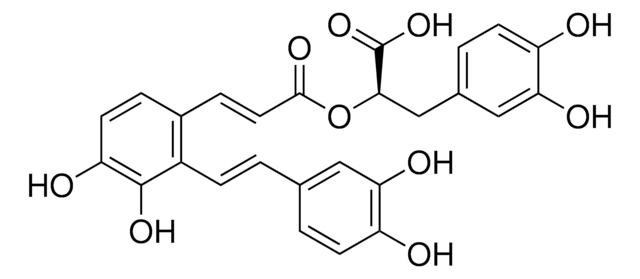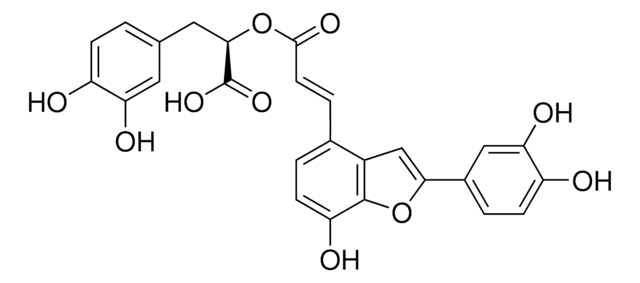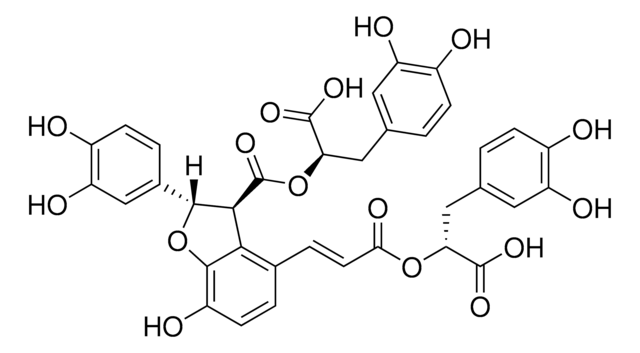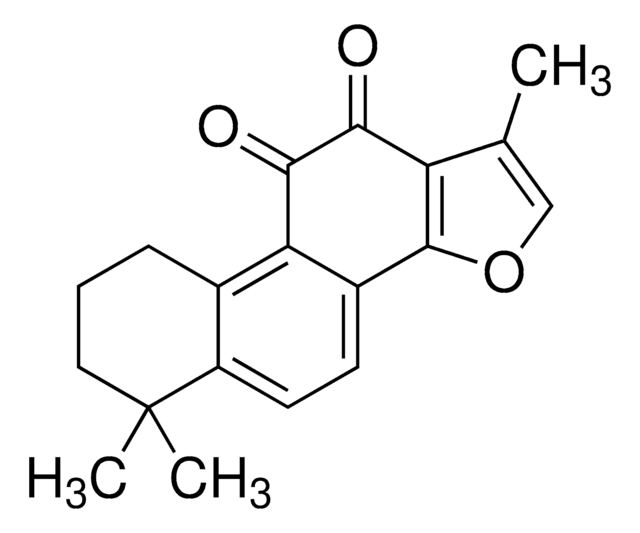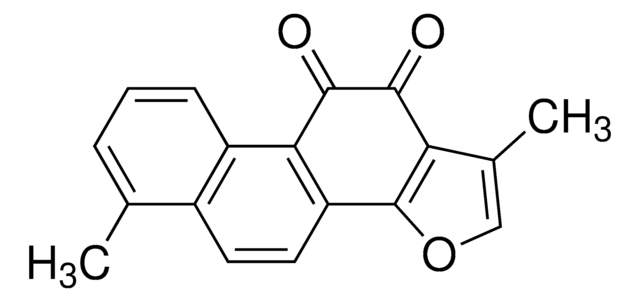SML0045
Salvianolic acid A hydrate
≥98% (HPLC)
Sinónimos:
Dan phenolic acid A hydrate
About This Item
Productos recomendados
Análisis
≥98% (HPLC)
formulario
powder
color
yellow
solubilidad
H2O: ≥19 mg/mL
Condiciones de envío
wet ice
temp. de almacenamiento
−20°C
cadena SMILES
O.OC(=O)[C@@H](Cc1ccc(O)c(O)c1)OC(=O)\C=C\c2ccc(O)c(O)c2\C=C\c3ccc(O)c(O)c3
InChI
1S/C26H22O10.H2O/c27-18-7-2-14(11-21(18)30)1-6-17-16(4-9-20(29)25(17)33)5-10-24(32)36-23(26(34)35)13-15-3-8-19(28)22(31)12-15;/h1-12,23,27-31,33H,13H2,(H,34,35);1H2/b6-1+,10-5+;/t23-;/m1./s1
Clave InChI
XFUSRNNWIRPEDG-FYLUTCCGSA-N
Aplicación
Salvianolic acid A hydrate has been used as rosmarinic acid derivative for the inhibition of DNA polymerase e in human cell lines.
Acciones bioquímicas o fisiológicas
Código de clase de almacenamiento
13 - Non Combustible Solids
Clase de riesgo para el agua (WGK)
WGK 3
Punto de inflamabilidad (°F)
Not applicable
Punto de inflamabilidad (°C)
Not applicable
Certificados de análisis (COA)
Busque Certificados de análisis (COA) introduciendo el número de lote del producto. Los números de lote se encuentran en la etiqueta del producto después de las palabras «Lot» o «Batch»
¿Ya tiene este producto?
Encuentre la documentación para los productos que ha comprado recientemente en la Biblioteca de documentos.
Los clientes también vieron
Nuestro equipo de científicos tiene experiencia en todas las áreas de investigación: Ciencias de la vida, Ciencia de los materiales, Síntesis química, Cromatografía, Analítica y muchas otras.
Póngase en contacto con el Servicio técnico